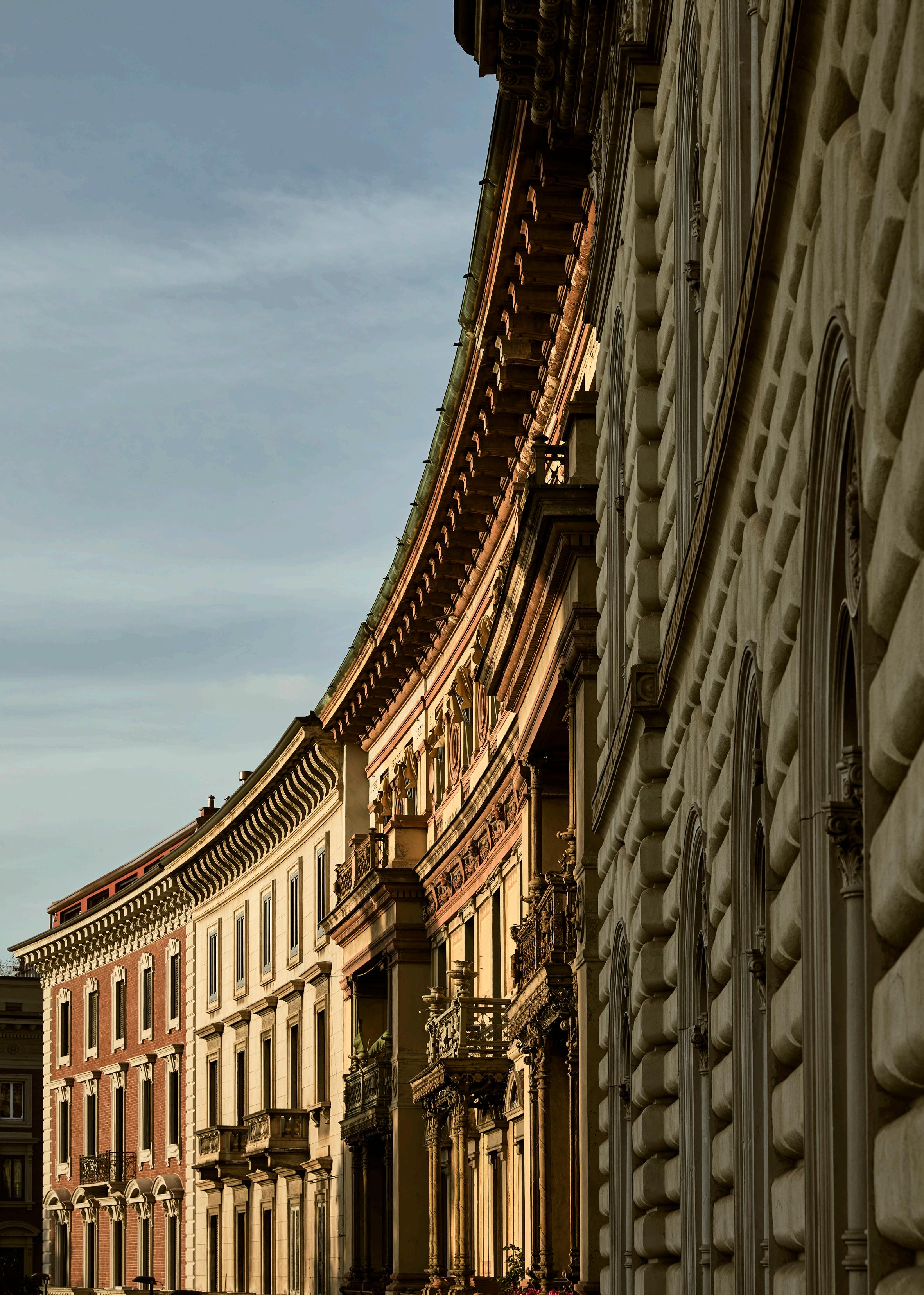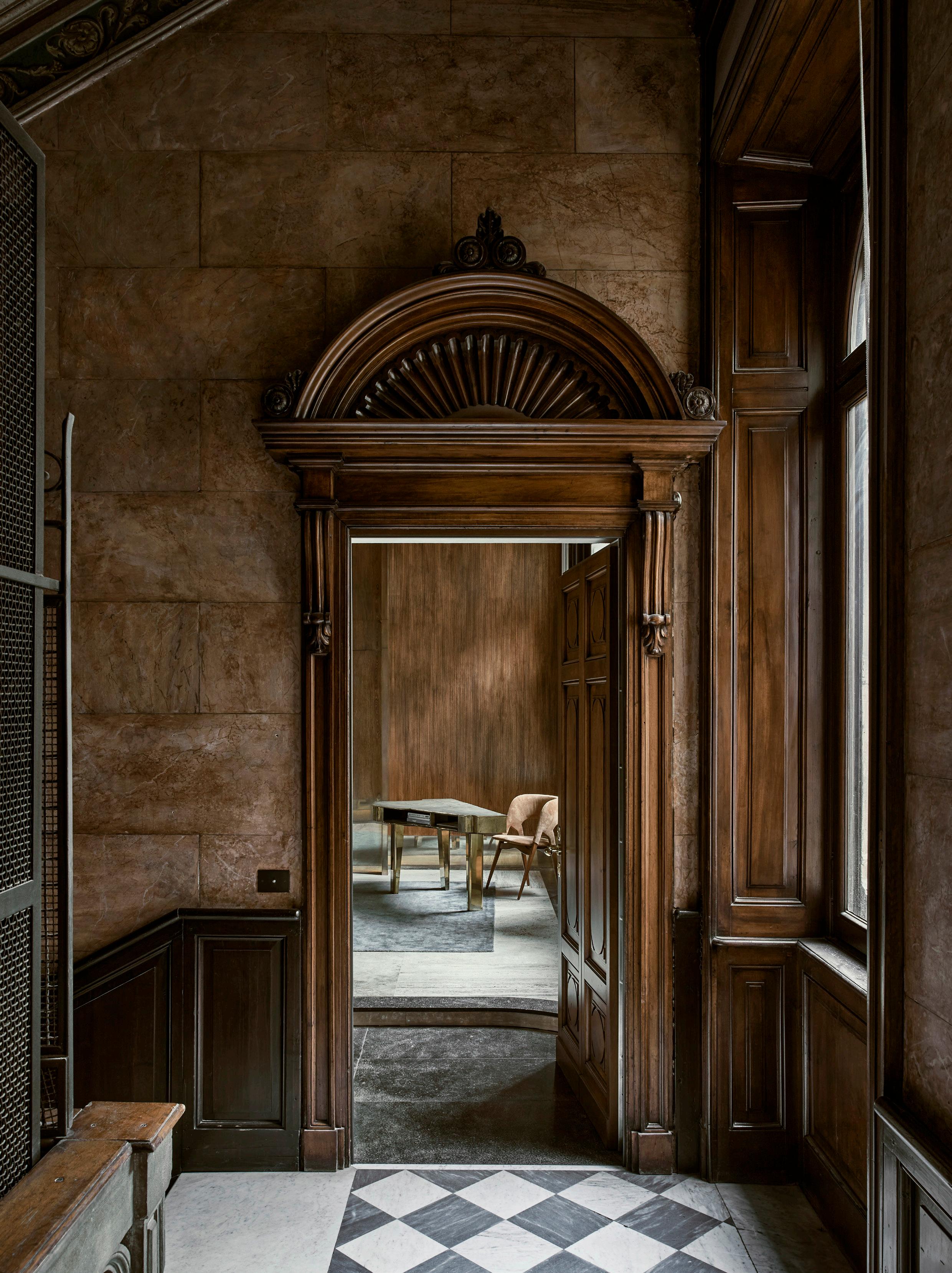
3 minute read
Uncover This 19th-Century Palazzo Restoration
LOCATION Milan, Italy DESIGN Vincenzo De Cotiis PHOTOGRAPHY Martin Morrell WORDS Alexia Petsinis
A 19th-century palazzo restoration reflects a balance between historical legacy and contemporary life, showcasing an intuitive approach to a spatial dialogue between form and materiality.

As an ambitious heritage intervention project by architect and designer Vincenzo De Cotiis, Palazzo Bonacossa echoes a sophisticated yet understated Milanese design legacy through the preservation of a historical architectural spirit. “The past was not overwritten, but rather refracted through a new lens,” De Cotiis says about the project. Fibreglass archways echo the building’s original forms, repurposed antique mirrors are now glass windows, hand-painted ceilings are invigorated with new textures; the interventions seamlessly permeate every aspect of the home, elevating its historical grandeur in a sleek, contemporary dimension.
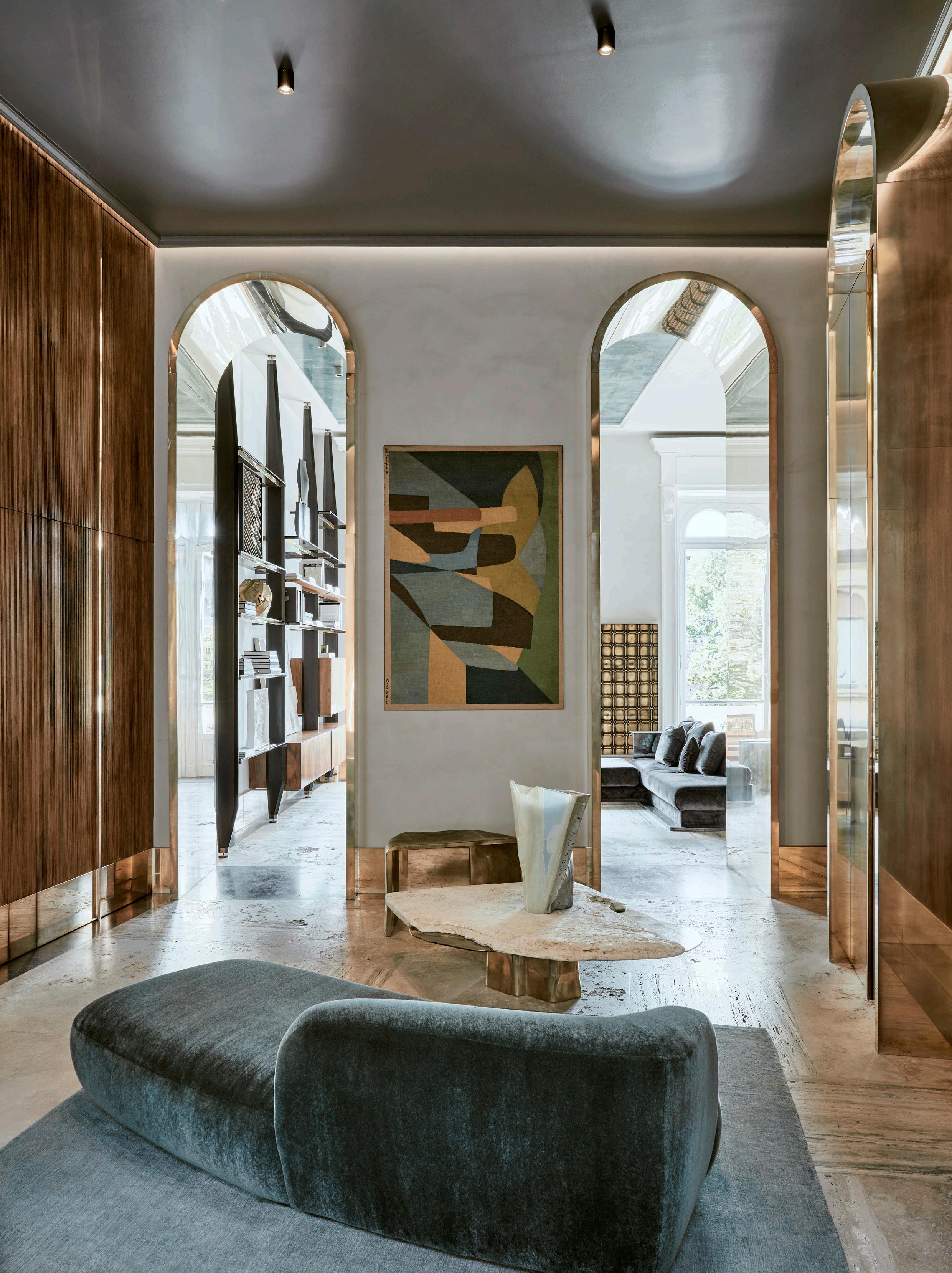
“Each decision had to mediate between respect for historical integrity and the desire to express a contemporary vision. Innovation was introduced not through contrast, but through resonance, a silent dialogue with the architecture’s past.”
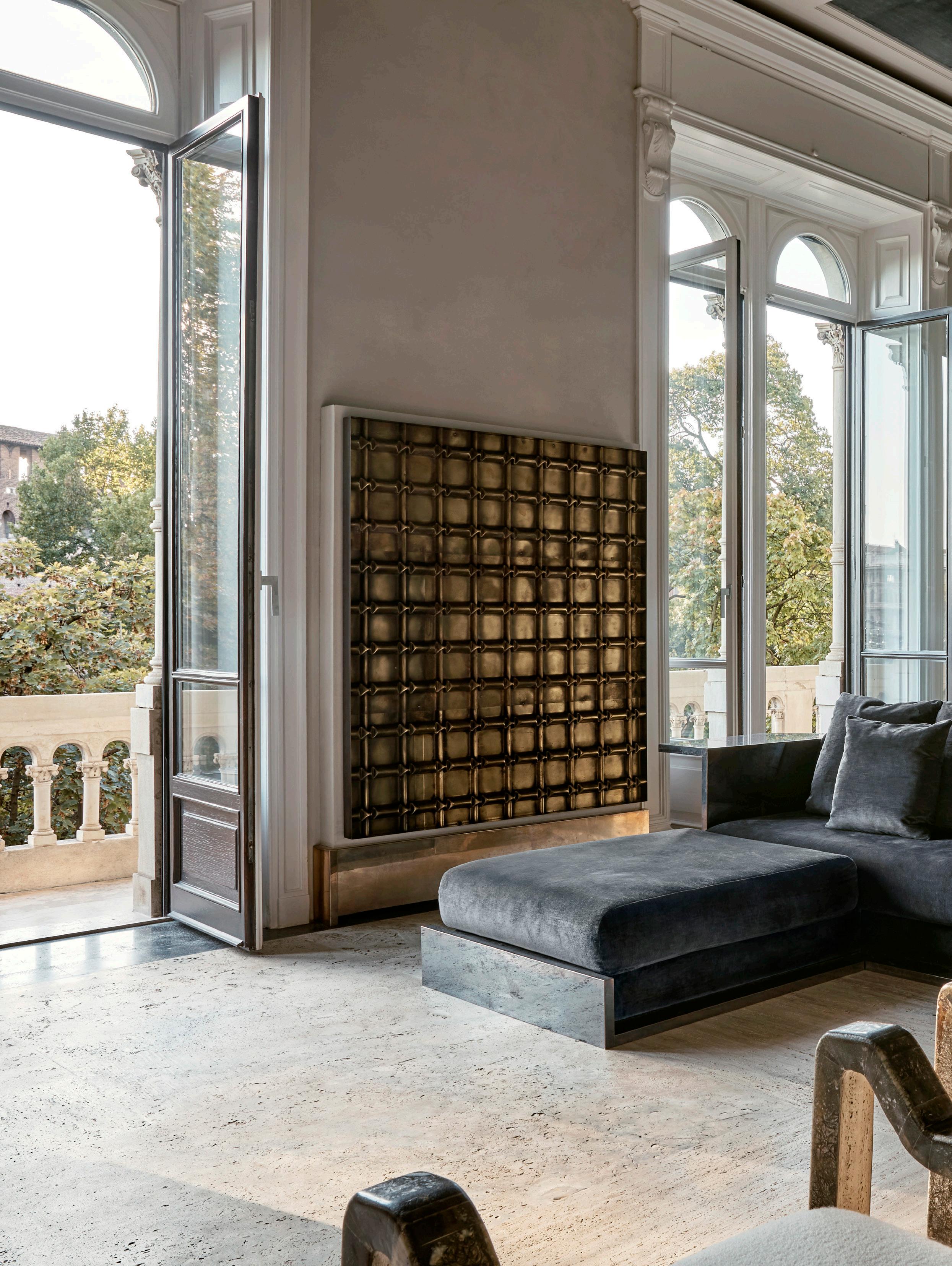
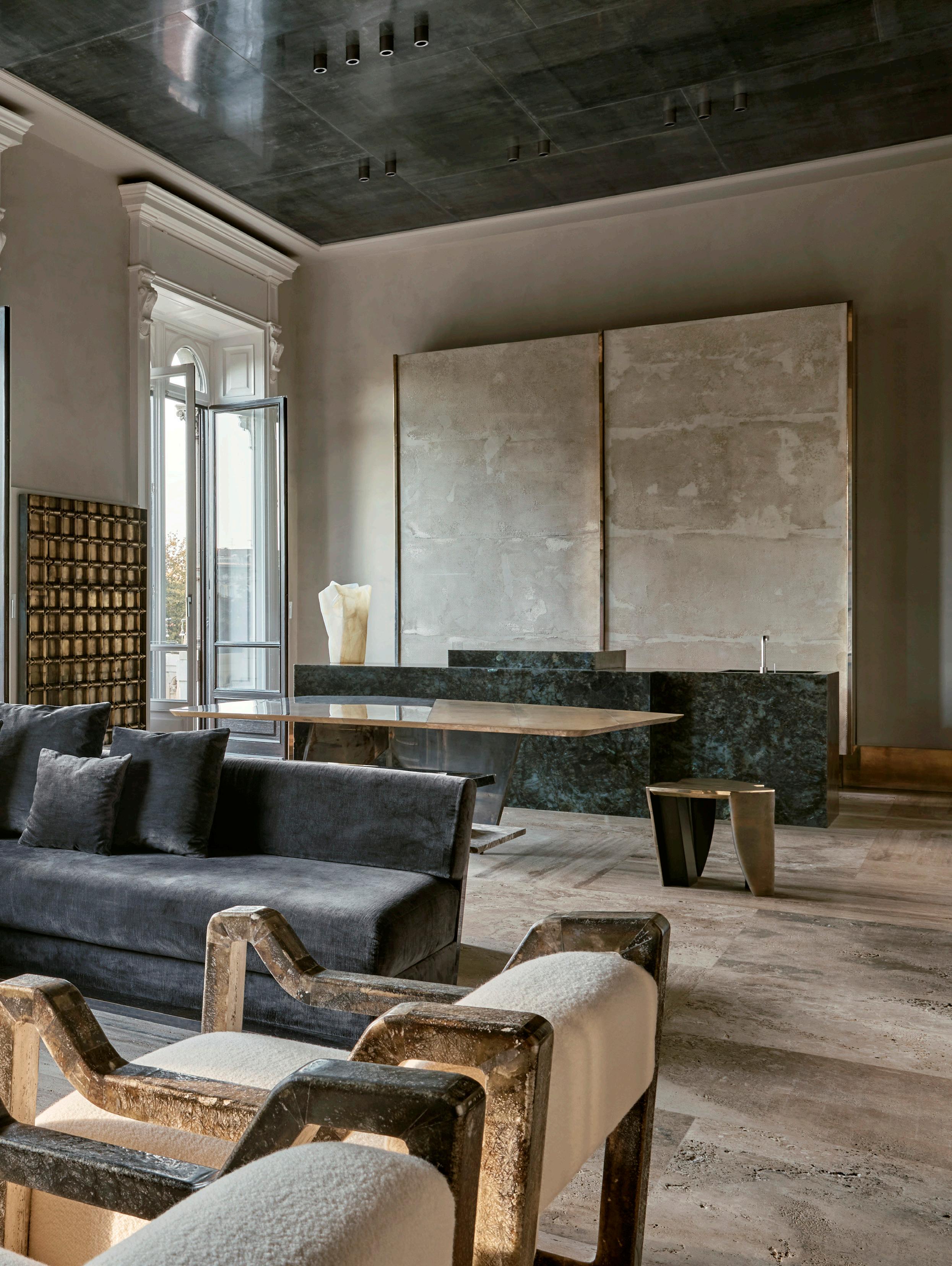
“The most complex challenge in this project was preserving the emotional patina of the palazzo without falling into nostalgia. We were not interested in simply restoring, but in creating a meaningful coexistence between eras,” De Cotiis says.
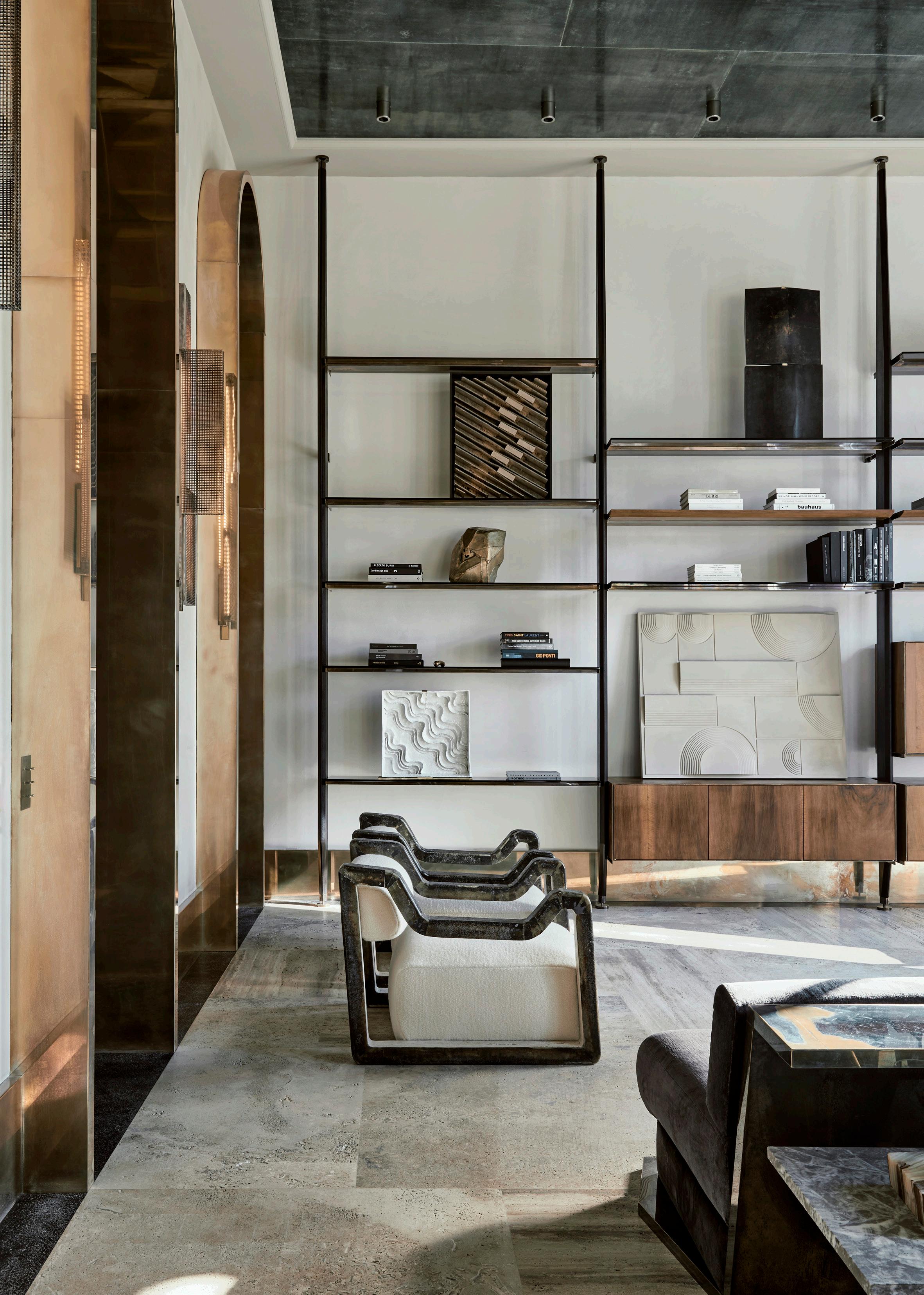
The colour and material palette creates a lustrous visual rhythm through the spaces, where evocative yet refined hues inspired by the 20th century, including deep greys and muted greens, add a theatrical undertone to the home. The architect’s signature application of weathered metals and fibreglass also creates an interplay between light and form, departing from ideas of nostalgia. From velvet seating to natural stone accents and feature walls with fluted oak panelling, Palazzo Bonacossa’s textural narrative evokes a sense of domestic warmth, while echoing a definitively Milanese design culture.
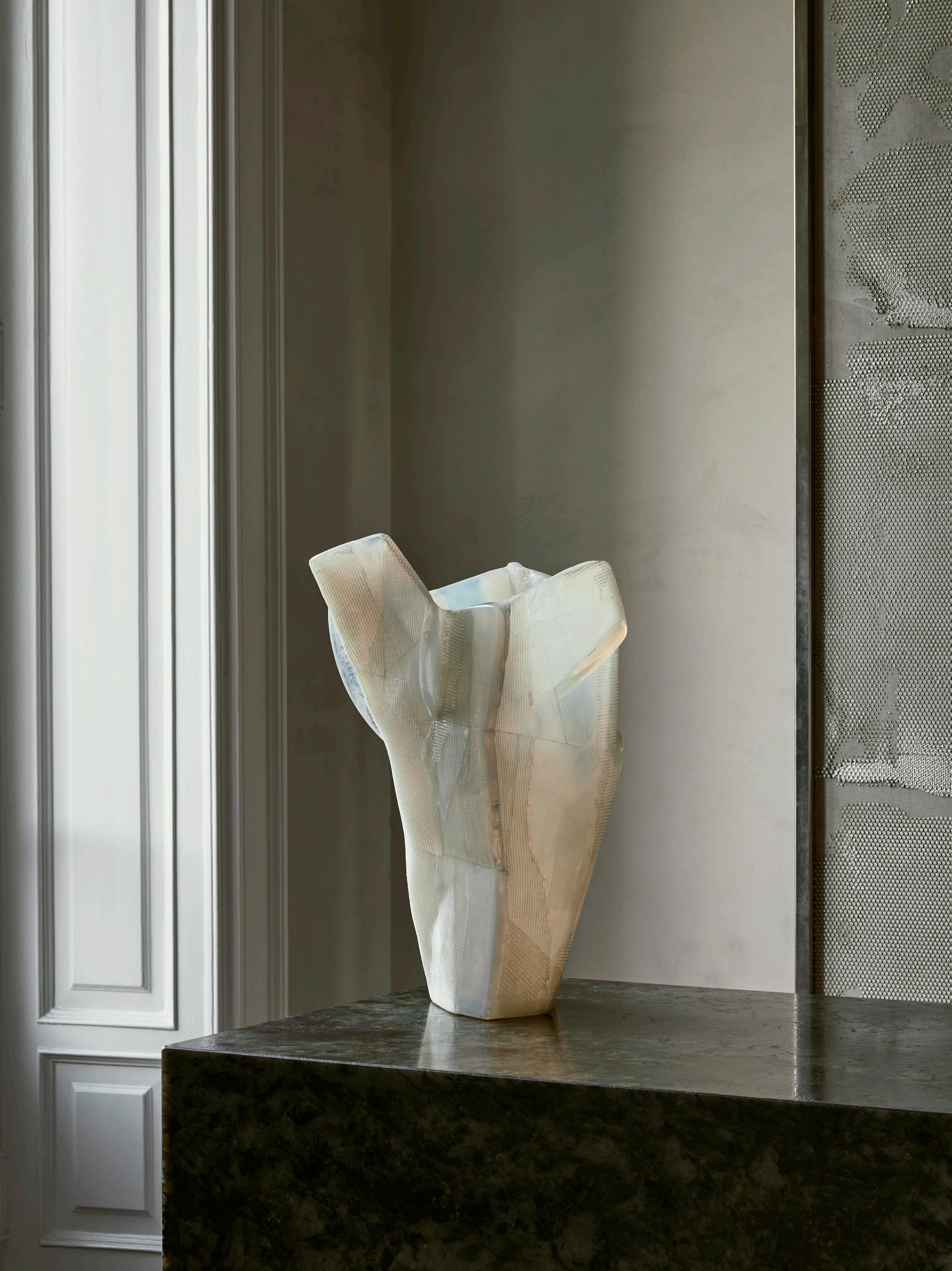
“The spaces were composed to invite observation, not spectacle. Elements such as hand-brushed brass, textured hand-painted ceilings, and calibrated asymmetries create a cadence that reflects the Milanese tradition of elegance without ostentation,” he shares.
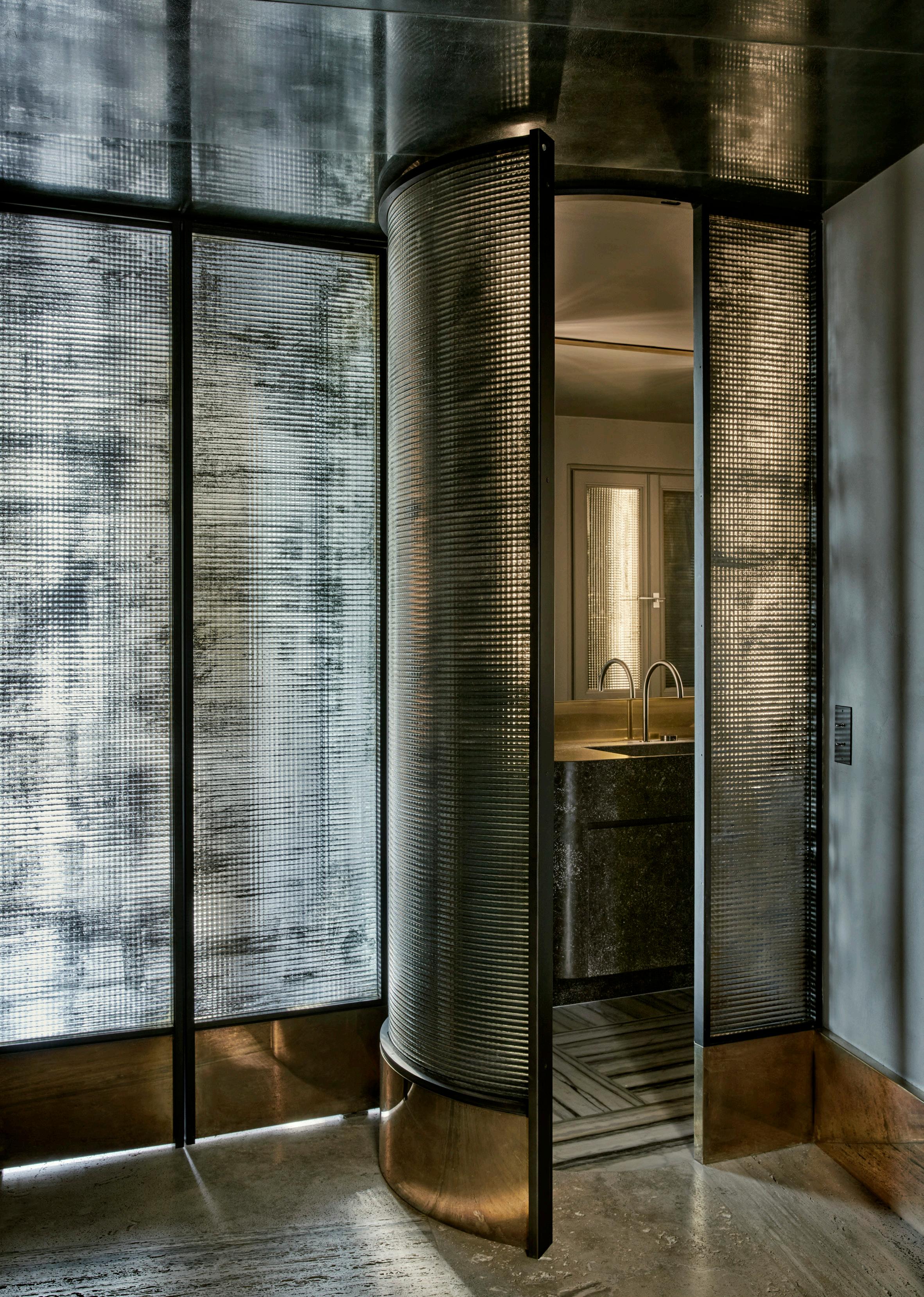
Bespoke furniture pieces by the architect bring an element of sculptural intrigue to the spaces, including the hand-painted fibreglass armchairs and a dining table in aged silver-plated brass. Conversing with reflective glass finishes and metallic accents, these elements immerse the occupants in the poetic ambience of the spaces, evoking a dialogue between intimacy and openness, historical legacy and contemporary innovation.
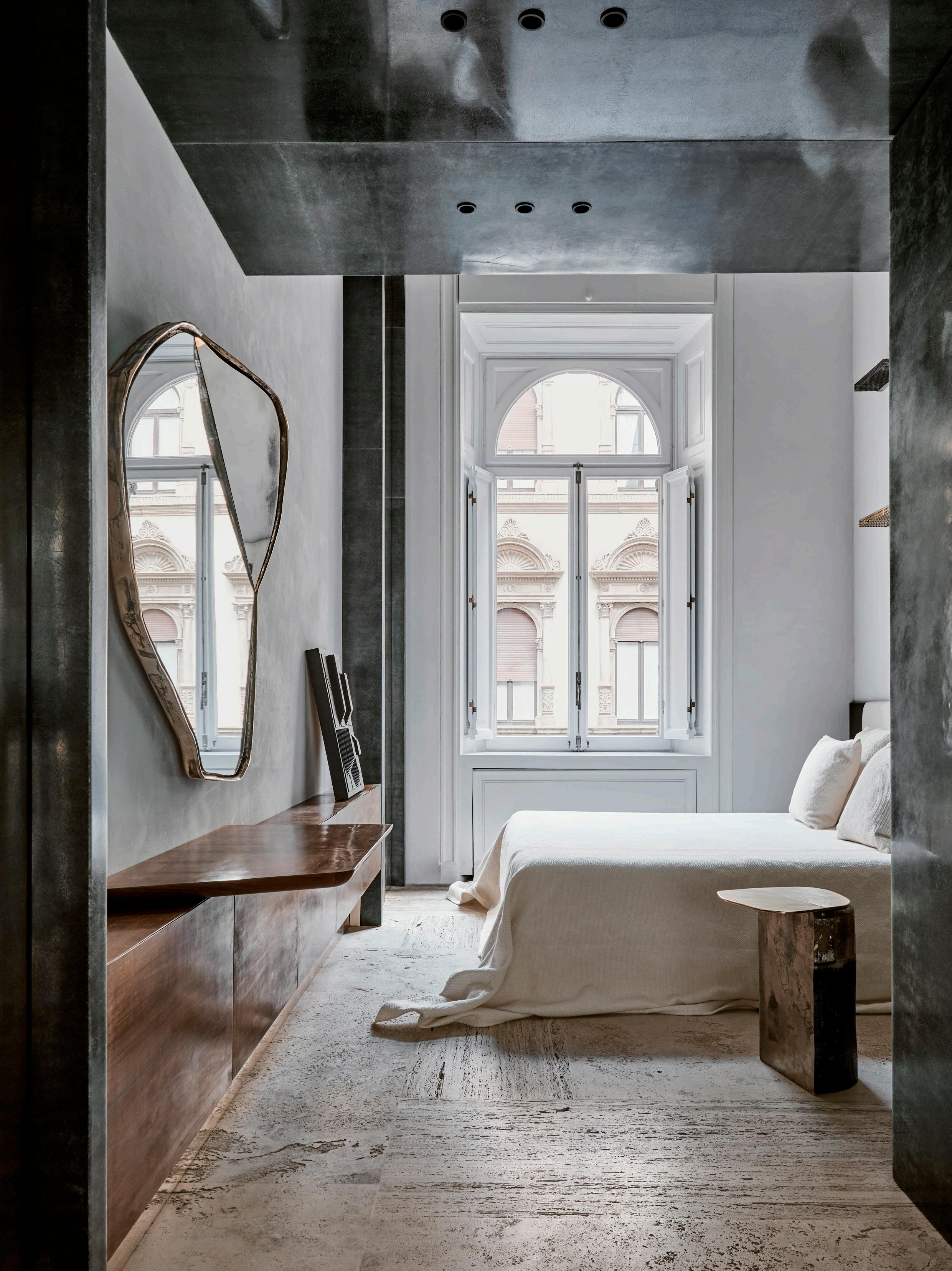
Deeply intuitive to the site’s historical context, De Cotiis has reimagined the heritage grandeur of Palazzo Bonacossa in a contemporary dimension, exploring a “sacred” dialogue between form and materiality with his inimitable architectural signature.
